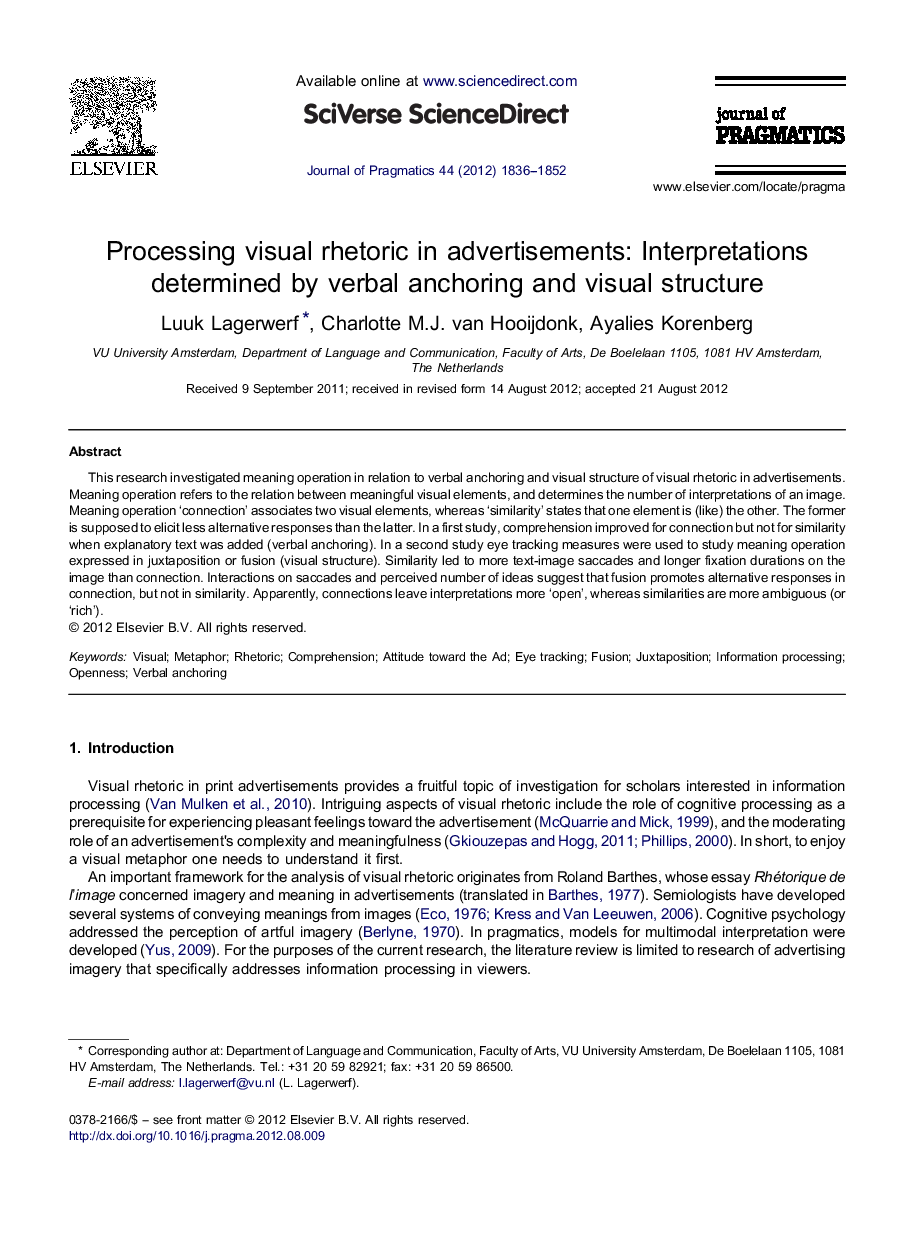| Article ID | Journal | Published Year | Pages | File Type |
|---|---|---|---|---|
| 933066 | Journal of Pragmatics | 2012 | 17 Pages |
This research investigated meaning operation in relation to verbal anchoring and visual structure of visual rhetoric in advertisements. Meaning operation refers to the relation between meaningful visual elements, and determines the number of interpretations of an image. Meaning operation ‘connection’ associates two visual elements, whereas ‘similarity’ states that one element is (like) the other. The former is supposed to elicit less alternative responses than the latter. In a first study, comprehension improved for connection but not for similarity when explanatory text was added (verbal anchoring). In a second study eye tracking measures were used to study meaning operation expressed in juxtaposition or fusion (visual structure). Similarity led to more text-image saccades and longer fixation durations on the image than connection. Interactions on saccades and perceived number of ideas suggest that fusion promotes alternative responses in connection, but not in similarity. Apparently, connections leave interpretations more ‘open’, whereas similarities are more ambiguous (or ‘rich’).
► Visual rhetoric can be decomposed in meaning operation and visual structure. ► Similarities (A is (like) B) need more cognitive elaboration than connections (A is associated with B). ► Similarities are richer in meaning, connections are more open in associations. ► Eye tracking data show that visual structure does not affect ambiguity, but rather openness. ► Visual structure and meaning operation provide different sources of incongruity.
